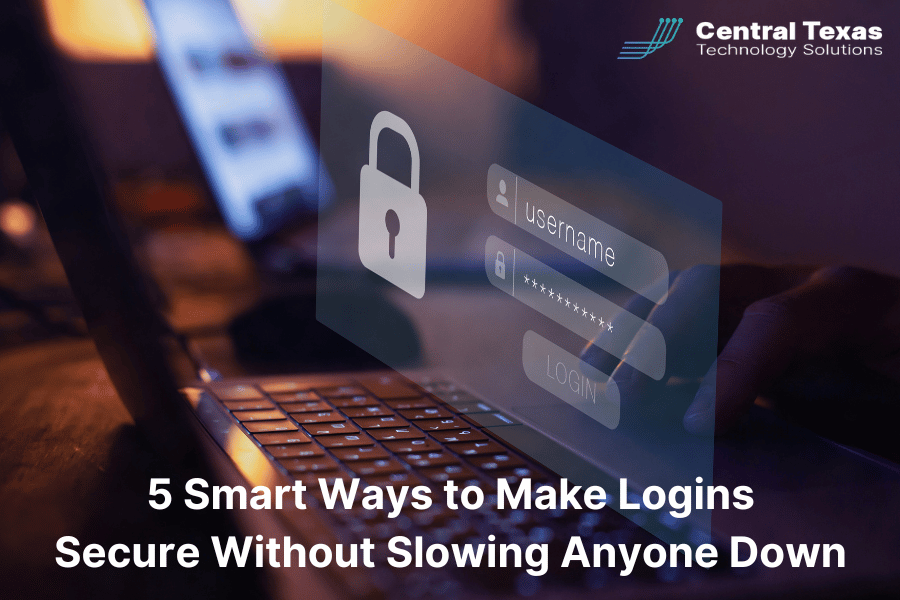
Password security is more critical than ever, but let’s be honest—most people will choose convenience over safety when given the choice. If logging into accounts feels like a hassle, your team may take risky shortcuts just to save time. That might mean using the same password across platforms, writing credentials down, or avoiding logouts altogether.
These shortcuts put your company’s data at risk. But improving password security doesn’t mean forcing complicated steps on your employees. In fact, the key to stronger protection is making secure login processes easier, not harder.
Why Strong Password Security Often Gets Ignored
You can have the most advanced security tools in the world, but if users find them annoying, they’ll avoid them—or worse, find less secure ways to get their work done. This is where many businesses struggle.
-
Complex passwords are hard to remember
-
Frequent password changes lead to weak or reused credentials
-
Employees resist systems that slow them down
-
Unauthorized tools become tempting if approved ones feel too clunky
The result? Your well-intended security plan ends up doing more harm than good.
So how do you implement strong password security without causing login fatigue?
5 Smart Ways to Balance Password Security and User Convenience
Here are five practical, user-friendly strategies to improve password security while keeping the login experience smooth.
1. Use a Password Manager
Expecting users to remember dozens of complex passwords just isn’t realistic. A password manager solves this problem by securely storing and auto-filling credentials across platforms.
Benefits include:
-
Automatically generates strong, unique passwords
-
Reduces password reuse and human error
-
Saves time during logins without compromising security
2. Enable Multi-Factor Authentication (MFA) Strategically
MFA adds a second layer of protection by requiring a second step, like a code or approval from a mobile device. But it doesn’t have to interrupt users every time they log in.
To keep it efficient:
-
Use adaptive MFA that activates only when a login seems risky
-
Offer biometric MFA where possible for a seamless experience
-
Communicate the purpose behind MFA to encourage adoption
3. Switch to Passkeys and Biometrics
Passkeys are a modern, passwordless login option that use cryptographic keys stored on trusted devices. Combined with biometrics like fingerprints or facial recognition, they make login fast and secure.
Why it works:
-
Removes the need to remember passwords
-
Significantly reduces phishing risks
-
Delivers a one-click or one-scan login experience
4. Set Password Policies That Make Sense
Outdated rules like frequent password resets often lead to weaker security. Instead, focus on policies that are secure and user-friendly.
Better policy practices:
-
Encourage long, memorable passphrases over complex strings
-
Avoid forcing unnecessary resets
-
Monitor for credential leaks instead of relying on user memory
5. Simplify Access with Single Sign-On (SSO)
Single Sign-On (SSO) allows users to log in once and access multiple platforms without entering credentials again and again.
SSO advantages:
-
Cuts down on password fatigue
-
Reduces help desk requests for password resets
-
Keeps login behavior consistent and easy to manage
Password Security Doesn’t Have to Be a Pain
When your security strategy works with your users instead of against them, everyone wins. Tools like password managers, passkeys, SSO, and adaptive MFA improve password security without slowing anyone down. The more seamless the experience, the more likely your employees are to stick with it—and that’s what real cybersecurity looks like in action.
Frequently Asked Questions About Password Security
Q: Why is relying on strong passwords alone not enough anymore?
A: Hackers are using advanced tools to crack even complex passwords. Additional protections like MFA, passkeys, and SSO create more secure barriers against attacks.
Q: Is using a password manager really safe?
A: Yes. Reputable password managers use encryption to keep your credentials secure, and they reduce human error by generating and storing strong passwords.
Q: What’s the benefit of passkeys over traditional passwords?
A: Passkeys eliminate passwords altogether by using cryptographic authentication and biometrics, which makes login faster and much harder for hackers to exploit.
Contact CTTS today for IT support and managed services in Austin, TX. Let us handle your IT so you can focus on growing your business. Visit CTTSonline.com or call us at (512) 388-5559 to get started!
